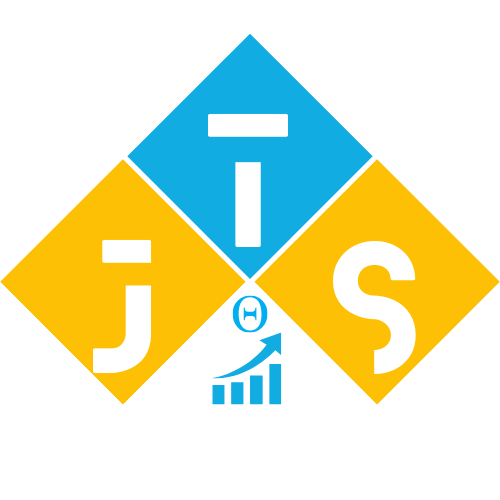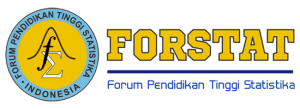Analysis of the Spatial Distribution Pattern of Poverty Percentage in Central Java in 2024 Using the Spatial Autocorrelation Approach
Abstract
Keywords
Full Text:
PDFReferences
Y. Purwanti, “Clustering analysis of multidimensional poverty in central java province, indonesia,” 2023, doi: 10.56655/jid.v2i2.132.
F. Dwi Ratna Sari and S. Partiwi Ediwijojo, “Clustering Analysis Using K-Medoids on Poverty Level Problems in Central Java by District/City,” KnE Soc. Sci., vol. 2023, pp. 78–87, 2023, doi: 10.18502/kss.v8i9.13321.
Y. Chen, “Spatial autocorrelation equation based on Moran’s index,” Dent. Sci. reports, vol. 13, no. 1, 2023, doi: 10.1038/s41598-023-45947-x.
Q. Luo, K. Hu, W. W. Liu, and H. Wu, “Scientometric Analysis for Spatial Autocorrelation-Related Research from 1991 to 2021,” ISPRS Int. J. geo-information, vol. 11, no. 5, p. 309, 2022, doi: 10.3390/ijgi11050309.
L. Anselin and S. Rey, Perspectives on Spatial Data Analysis. New york: Springer, 2010.
L. Apriani, Azwardi, and Imelda, “Analisis Autokorelasi Spasial Kemiskinan Antardaerah di Sumatera,” Universitas Sriwijaya, 2022. [Online]. Available: https://repository.unsri.ac.id/79195/
M. F. D. Almismary, D. R. Panuju, and G. S. Indraprahasta, “Dimensi Spasial Determinan Kemiskinan Kabupaten/Kota di Provinsi Aceh,” J. Pembang. Wil. dan Kota, vol. 20, no. 4, pp. 489–509, 2024, doi: 10.14710/pwk.v20i4.59542.
[BPS] Badan Pusat Statistik Provinsi Jawa Tengah, Indikator Utama Sosial, Politik dan Keamanan Provinsi Jawa Tengah 2024, vol. 16. 2024.
L. Anselin, Spatial Autocorrelation. University of Illinois, 1999.
N. Wagesho, N. K. Goel, and M. K. Jain, “emporal and spatial variability of annual and seasonal rainfall over Ethiopia,” Hydrol. Sci. J., vol. 58, no. 2, pp. 354–373, 2013, doi: 10.1080/02626667.2012.754543.
A. O. Sihombing, “Analisis spasial Kemiskinan Di Sumatera Utara,” J. Anal. Res. Stat. Comput., vol. 1, no. 1, pp. 64–77, 2022, [Online]. Available: https://www.jarsic.org/main/article/view/6/3
W. Lestari, A. S. Brata, A. Anhar, and S. Rahmawati, “Analisis Autokorelasi Spasial Global dan Lokal Pada Data Kemiskinan Provinsi Bali,” Jambura J. Math., vol. 5, no. 1, pp. 218–229, 2023, doi: 10.34312/jjom.v5i1.18681.
N. Yuriantari, M. Hayati, and S. Wahyuningsih, “Analisis Autokorelasi Spasialtitik Panas Di Kalimantan Timur Menggunakan Indeks Moran dan Local Indicator Of Spatial Autocorrelation (LISA),” J. Eksponensial, vol. 8, no. 1, pp. 63–70, 2017.
L. W. Adha and M. U. Basuki, “Analisis Spasial pada Kemiskinan di Kabupaten/Kota Provinsi Jawa Tengah Tahun 2011-2017,” Diponegoro Jorunal Econ., vol. 9, no. 2, pp. 135–143, 2020, Accessed: Feb. 15, 2025. [Online]. Available: http://ejournal-s1.undip.ac.id/index.php/jme
L. Mason, B. Hicks, and J. S. Almeida, “Demystifying Spatial Dependence: Interactive Visualizations for Interpreting Local Spatial Autocorrelation,” 2024, doi: 10.48550/arxiv.2408.02418.
G. Betti, “Can a neighbour region influence poverty? A fuzzy and longitudinal approach,” 2018.
Y. Sari, “Kajian Spasial Temporal Kemiskinan Di Provinsi Jawa Tengah,” J. Demogr. Etnography Soc. Transform., vol. 4, pp. 52–63, 2024.
DOI: http://dx.doi.org/10.62870/tjs.v1i1.31320
Refbacks
- There are currently no refbacks.
Copyright (c) 2025 Miftahus Sholihin
This work is licensed under Creative Commons Attribution 4.0 International









